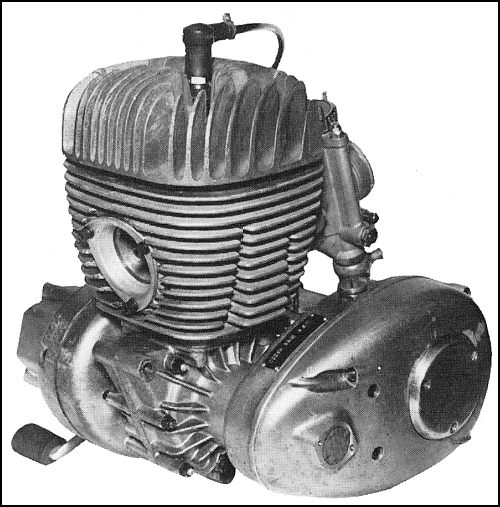

The prototype survived extensive drop testing at the Special Operations School at Arisaig in Scotland where it was demonstrated to the commando forces. The aim was that a paratrooper could remove the Welbike from its special green container (which was marked in white lettering with the words Motor Cycle) and its easily identified coloured parachute, and be on the road within 11 seconds. The saddle was pulled up and the footrests folded out ready to push start the two stroke engine and ride into action. Once it hit the ground all that was needed was to twist the handlebars into position and lock them on spring-loaded pins. The Welbike was then packed into the parachute container with the rear wheel to the base of the parachute canister, which had a percussion head to minimise damage on landing. Tanks were pressurised before the Welbike went into action to save time. The range on maximum capacity of 6.5 imperial pints (3.7 L 7.8 US pt) of fuel was 90 miles (140 km) at about 30 mph (48 km/h). The fuel tank was as small as possible and, because its bottom feed point was located lower than the carburetor, had to be pressurised occasionally by a hand pump built into the tank. There was very limited space in the airborne equipment container, so the Welbike, which was carried in the container at an angle, had no suspension, no lights and just a single rear brake. The name Welbike comes from the custom that all the clandestine equipment devised at Station IX in Welwyn had names starting with Wel, e.g., Welman, Welrod. Once deployed, they were easily assembled and ready for use as quickly as possible. Powered by a Villiers 98 cm 3 (6.0 cu in) single-cylinder two-stroke petrol (gasoline) engine, the Welbike was designed to fit into a CLE Canister – the standard parachute airdrop container 51 inches (130 cm) long, 15 inches (38 cm) high, and 12 inches (30 cm) wide.

Colonel John Dolphin, the Commanding Officer of Station IX, the secret Inter-Services Military Research Establishment based in a mansion called The Frythe (latterly owned by the pharmaceutical company GSK) an hour's drive north of London near the town of Welwyn in Hertfordshire, which had been taken over for the war effort. 8.The original prototype was designed by SOE motor cycle enthusiast Harry Lester, from an idea developed by Lt.

Web.ġ953 'Ten Villiers Engines For New Season', The Advertiser (Adelaide, SA : 1931 - 1954), 19 November, p. "Ten Villiers Engines For New Season" The Advertiser (Adelaide, SA : 1931 - 1954) 19 November 1953: 8. The Advertiser (Adelaide, SA : 1931 - 1954), p. Ten Villiers Engines For New Season (1953, November 19). Article identifier Page identifier APA citation


 0 kommentar(er)
0 kommentar(er)
